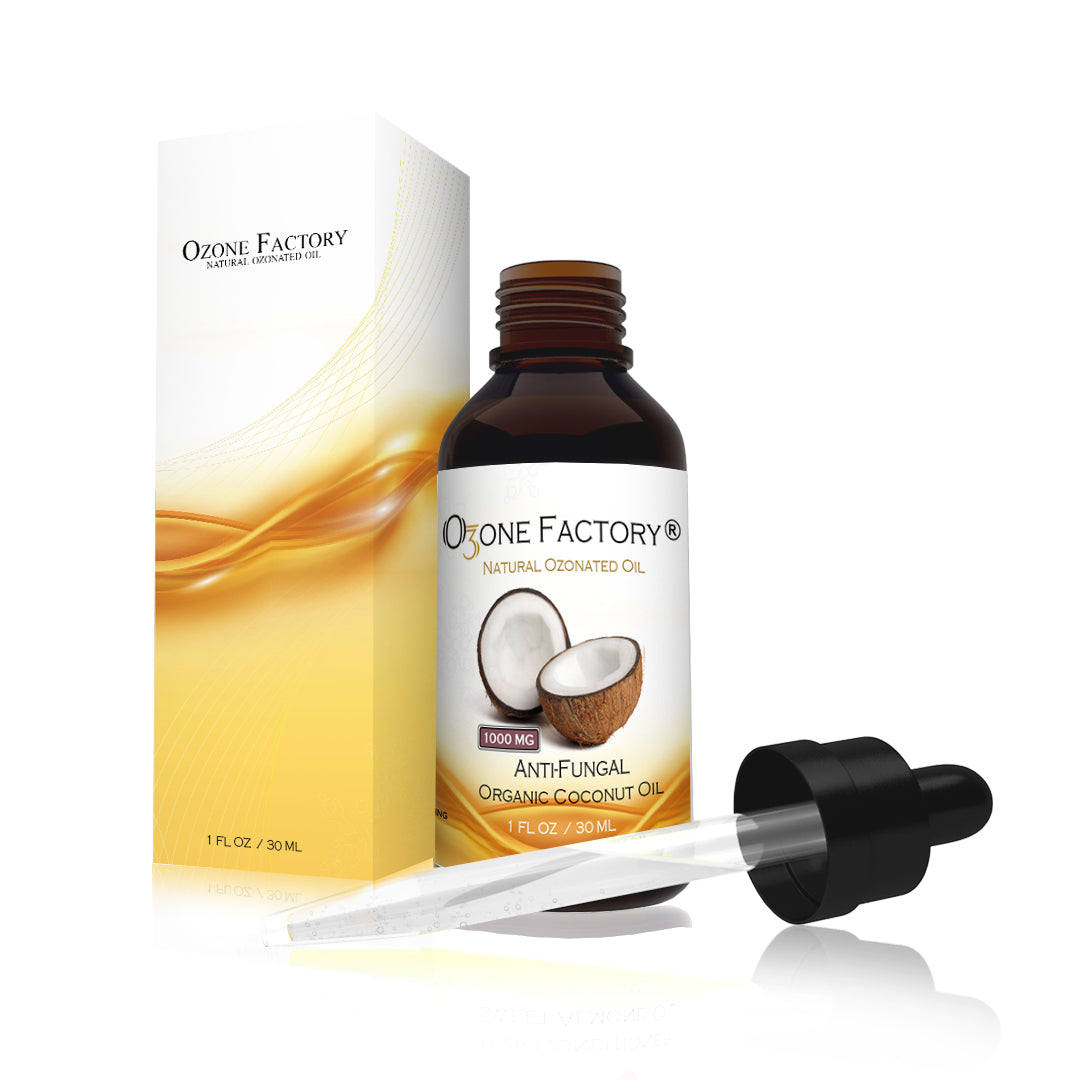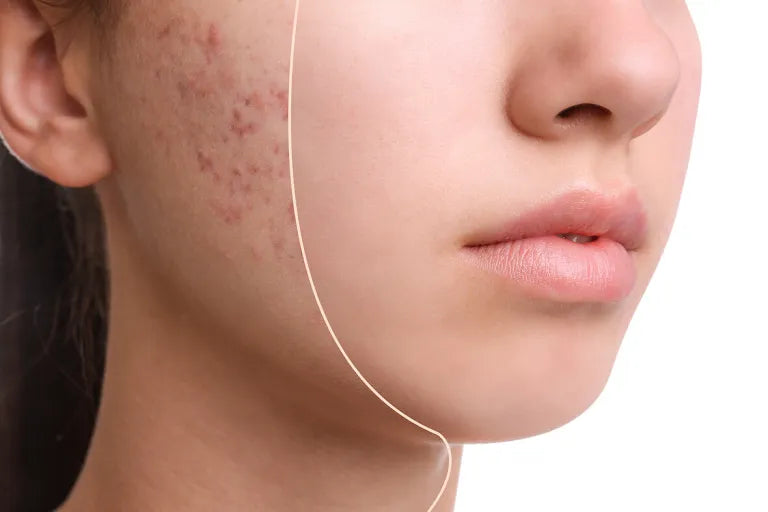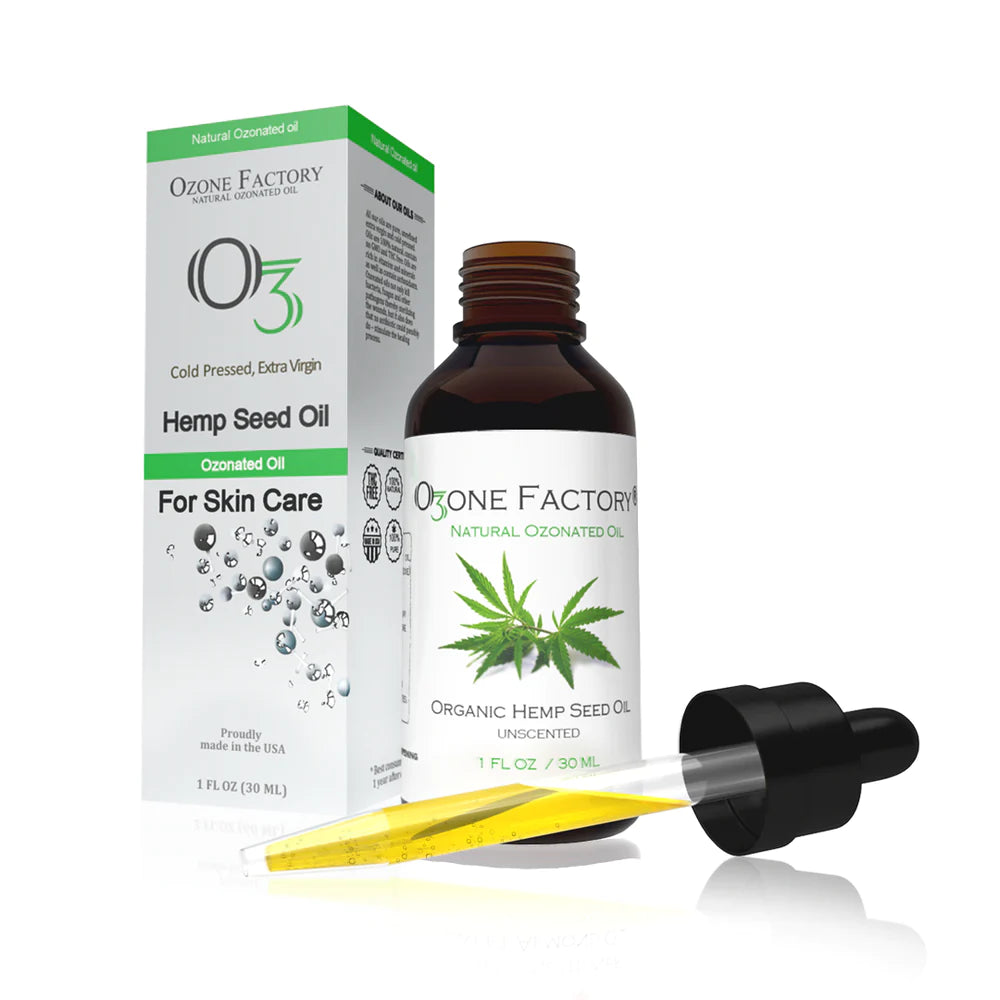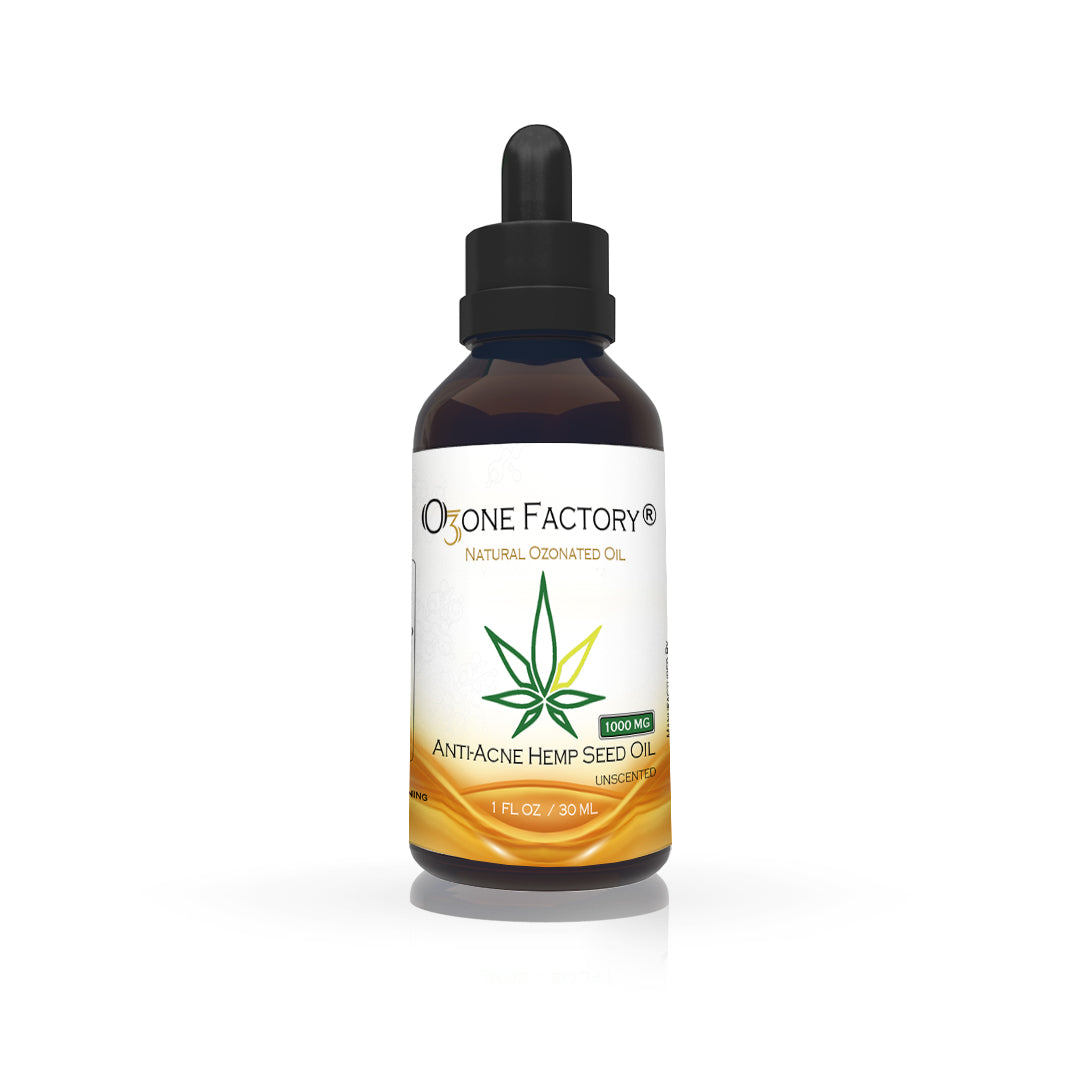
Germicidal Properties of Ozonated Oil
Ozone is a well-known allotropic form of oxygen and a very strong oxidative agent. Due to this property it is one of the strongest disinfectants. Its biocidal activity was discovered by Fox in 1873. Ozone was first used in medicine in 1894 by Labbe and Oudin for tuberculosis treatment. The 20th century brought many new applications for ozone germicidal properties. A gaseous mixture of ozone and air was used in 1915 for wound disinfection by Wolff. In 1935 it was used in dental medicine by Fisch and in surgery by Payr (Viebahn-Hansler, 2002).
Ozone germicidal action was widely proved on a broad group of microorganisms including gram-positive and gram-negative bacteria as well as spores and vegetative cells (Guzel-Seydim et al., 2004). Many studies comparing ozone with popular disinfecting agents have been carried out (Khadre and Yousef, 2001; Telles Silveira et al., 2005; Filippi, 2005; Orta de Velasquez et al., 2005; John et al., 2005). The results of the studies suggest that ozone is the best disinfectant. Special attention is deserved by studies by Telles Silveira et al., who confronted germicidal action of ozone and sodium hypochlorite on Enterococcus sp. (gram-positive bacteria) which are often found in hospital sewage. Ozone turned out to be effective against these microorganisms, even the vancomycin-resistant Enterococcus (VRE), whereas sodium hypochlorite proved to be less effective (Telles Silveira et al., 2005).
Another significant study was conducted by Filippi, who investigated the survivability of the pathogens in dentistry equipment disinfected with ozone and hydrogen peroxide. Samples from devices disinfected with hydrogen peroxide showed the presence of Pseudomonas aeruginosa, whereas in samples from devices disinfected with ozone the occurrence of P. aeruginosa was not observed (Filippi, 2005). Another study comparing the biocidal action of ozone and hydrogen peroxide against foodborne Bacillus spp. spores was conducted by Khadre and Yousef. They proved that hydrogen peroxide is less effective than ozone even when it was used in concentrations 10,000-fold higher than those applied for ozone (Khadre and Yousef, 2001).
Ozone kills microbes by acting on cell walls and semipermeable membranes. This leads to changes in the chemical structure of the cell and interferes with cell metabolism products exchanging with the environment (Bin´, 2002; Shiota et al., 2005). Furthermore it causes cell envelope disintegration leading to leakage of the cell contents (Guzel-Seydim et al., 2004; Pascual et al., 2007). Bactericidal, fungicidal and virucidal properties of ozone are attributed to its ability to destroy many of the enzymatic structures. Naturally each microorganism has specific sensitivity to ozone. Bacteria are more sensitive than yeast and fungi. As a result of differences in structure of the cell walls, gram-positive bacteria are more sensitive to ozone than gram-negative organisms (Guzel-Seydim et al., 2004; Pascual et al., 2007).
Nowadays methods exploiting medical applications of ozone are called ozone therapy, which may be employed in different fields of medicine, e.g., general medicine, dermatology, surgery, dental medicine, orthopedics, immunology (Viebahn-Ha¨nsler, 2002). Since ozone is a gas and there are not many medicines available in gaseous phase, special techniques had to be developed for the safe use of ozone (Viebahn-Ha¨nsler, 2002). It can be administered in the form of ozone-oxygen mixtures, ozonized water or ozonized vegetable oils. Although gaseous ozone is used in medicine for treating patients, that does not mean that ozone is harmless. When breathing ozone in at high concentrations it can be a very harmful substance, especially for the pulmonary tract. Hence it is extremely important to use ozone in small and safe doses just above the threshold level (Bocci, 2006).
Vegetable oils have found application in wound disinfection and improve the process of healing. They are interesting because they can be used outside a surgery. Their disinfecting effect is much slower than in the case of ozone-oxygen mixtures or even ozonated water. Ozonated oils need hours rather than seconds to achieve a satisfactory reduction in the amount of microorganisms (Viebahn-Ha¨nsler, 2002). Ozonated oils are quite popular in many countries especially in Cuba where OLEOZONE is produced according to the process developed at the Ozone Research Center. It is a registered drug in Cuba and is obtained through the ozonation of sunflower oil.
New methods of pathogenic microorganism elimination have aroused much interest recently; that is why ozone and its application as a disinfection agent has become a popular object of scientific research. The aim of this study (Kinga Skalska , Stanisław Ledakowicz , Jan Perkowski & Barbara Sencio (2009) was to determine minimum ozone doses in ozonated oil for killing various microorganisms like Bacillus subtilis, Escherichia coli, Candida albicans. First, five different vegetable oils were ozonated and their properties, such as iodine number, peroxide value, acidity value and viscosity were compared. Afterwards one chosen vegetable oil was subjected to further microbiological studies.
RESULTS AND DISCUSSION
Physical and Chemical Properties
The first stage of this research pursued a goal of assessing the changes in chemical properties of ozonated vegetable oils. Five vegetable oils with different compositions of fatty acids were tested: olive oil, sunflower oil, rapeseed oil, corn oil and grape seed oil. All five oils were ozonated until reaching the absorbed ozone dose around 10 mg O3/g oil.
The highest initial iodine number was observed for sunflower oil, the lowest value was found in olive oil. This is connected with the high amount of unsaturated, especially polyunsaturated, fatty acid in sunflower oil and their low amount in olive oil. For all vegetable oils examined, a decrease in iodine number after ozonation was observed, obviously as a result of reaction between ozone and unsaturated fatty acids.
It varied depending on the tested oil, which again is related to the composition of oils. Another analyzed parameter was peroxide index which increased during the ozonation process. The highest values were obtained for ozonated olive oil and ozonated sunflower oil. High peroxide index is connected with the reaction of ozone with carbon-carbon double bonds in unsaturated fatty acids. It produces ozonides, hydroperoxides, aldehydes, peroxides, diperoxides and polyperoxides according to well-known Criege´e mechanism (Diaz et al., 2005; Jardines et al., 2003). Furthermore according to Tamoto et al. the major component of ozonated olive oil is triozonide of triolein. 
The increase of peroxide index for sunflower oil was higher than for olive oil due to lower amounts of double bonds in olive oil. Iodine number analysis for ozonized sunflower oil showed a decrease of iodine number with an increasing ozone dose. This shows that almost all double bonds present in fatty acids were saturated in the reaction with such a strong oxidative agent as ozone.
From the germicidal point of view, the most important is peroxide number since it indicates the amount of peroxide compounds formed. As Diaz et al. suggested, these are responsible for the biocidal activity of ozonized vegetable oils (Diaz et al., 2005a, 2005b, 2006). Peroxide number increases almost linearly with the increase of ozone dosage as shown in figure. Peroxide number for the ozone dosage 40 mgO3/g oil rose forty times compared to pure sunflower oil, whereas for 300 mgO3/g oil it rose more than 100 times.
Chemical analyses of ozonized sunflower oil proved that acidity number increases with increase of ozone dosage. Even for short ozonation times, the acidity number increased more than 30 times. This relation is presented in figure. Conventionally, acidity number is used to assess if the studied oil is fresh or rancid, and if it was well stored. The growth in the value of the acidity number indicates the correctness of the ozonation process. Fats show neutral reaction, however partial hydrolysis takes place during the ozonation process and unbound fatty acids give fats an acidic reaction. Apart from chemical and biological properties, viscosity also was analyzed. Results showed increases in viscosity of ozonated sunflower oil with increasing ozone dose. This phenomenon could be used for process monitoring in order to estimate ozonation reaction progression. The two ozonated sunflower oils with the highest ozone doses had the consistency of gel (viscosity achieved app. 0.28 Pas). 
Microbiological Studies
Microbiological studies for ozonated sunflower oil were carried out with the following ozone doses: 20, 40, 70, 100, 200, 250 and 300 mg O3/g oil. Bactericidal and fungicidal effectiveness of ozonized sunflower oil was investigated. The examination of the results obtained allowed determination of the ozone dose in preparation that causes 100% growth inhibition of the examined microorganisms. Results were gathered in the table.

The examination of the results obtained allowed determination of the ozone dose in preparation that causes 100% growth inhibition of the examined microorganisms. Results were gathered in Table 4. The findings suggest that microbes have diversified sensitivity to ozonated sunflower oil. Gram-positive bacteria B. subtilis turned out to be the least resistant, because no growth on the plates for preparation with the ozone dose of 200 mg O3/g oil and above was observed. Both gram-negative bacteria E. coli and yeast C. albicans were more resistant to ozonated sunflower oil than B. subtilis, since these germs needed preparation with the ozone dose higher by 50 mg O3/g oil to be totally destroyed. This could suggest that ozonated sunflower oil, similarly to gaseous ozone, acts stronger on grampositive bacteria than it does on gram-negative bacteria and fungi. As explained in the introduction, this is connected with the cell wall structure. However, after conducting a further literature survey, it is obvious that such an approach would be too simplified. Since the Diaz et al. studies on antimicrobial action of ozonated vegetable oils, not all gram-positive bacteria are more sensitive to ozonated oils than gram-negative ones. This suggests that the mechanism of biocidal action of ozonated oils may be more complex.

Exemplary fungicidal effects of ozonated sunflower oil is shown in figure. Ozonized sunflower oil with the ozone dose below 200 mg O3/g oil shows no germicidal properties. Then, 100% growth inhibition of the studied microorganisms was obtained for ozonated sunflower oils with high values of peroxide number (more than 630 milliequivalent/kg). For ozone doses lower than 200 mg O3/g oil and the peroxide number lower than 630 milliequivalent/kg, no disinfecting effect was gained. Our studies confirmed the results of the earlier research by Diaz et al. which indicated that only ozonized sunflower oils with sufficiently high concentrations of peroxide compounds show toxic influences on microorganism growths (Diaz et al., 2005a, 2005b, 2006). Results presented in this paper suggest that ozonated sunflower oils inhibited expansion and growth of microbes.
Therapeutic Effects
Additionally, therapeutic effects of ozonized sunflower oil with ozone doses around 300 mg O3/g oil were tested with the cooperation of the Dermatology Clinic of the Medical University of Ło´dz´. The preparation was used for one month for topical treatment of two patients, one with a wound ulcer and the other with nail psoriasis. The wound ulcer before treatment can be observed, with a high amount of fibrous tissue and only few areas with granular tissue, which is the sign of healing. After a month of therapy a significant increase in amount of granulation is observed. In the case of nail psoriasis, presented, the improvement of patient condition is easily noticeable.
CONCLUSIONS
Among the studied microorganisms, the most resistant against ozonated oil appeared to be gram-negative bacteria E. coli and yeast C. albicans, which required around 250 mg O3/g oil to become inhibited. Whereas gram-positive bacteria B. subtilis was shown to be the least resistant because no growth on the plates for preparation with the ozone dose 200 mg O3/g oil was observed. Diaz suggested that there exists a connection between the value of the peroxide number and the disinfecting properties of ozonized sunflower oils. The results indicated that ozonated sunflower oils can inhibit the development and growth of the microorganisms tested. Ozonated sunflower oils gain recognition since they have one significant advantage over gasous ozone and ozonized water. It can be used outside a surgery by the patient himself. It is also easy to manufacture and to be preserved. Furthermore, its gelled consistency makes it easy to apply locally. In order to provide the required effectiveness of topical therapy for scarcely healing wounds, it is important to apply ozonated oil with the ozone dose exceeding the minimal dose for the specific pathogen.
Sources:
Germicidal Properties of Ozonated Sunflower Oil
Kinga Skalska a , Stanisław Ledakowicz a , Jan Perkowski b & Barbara Sencio a a Department of Bioprocess Engineering , Technical University of Łódź , Łódź, Poland b Institute of Radiation Chemistry, Technical University of Łódź , Łódź, Poland Published online: 27 May 2009.






